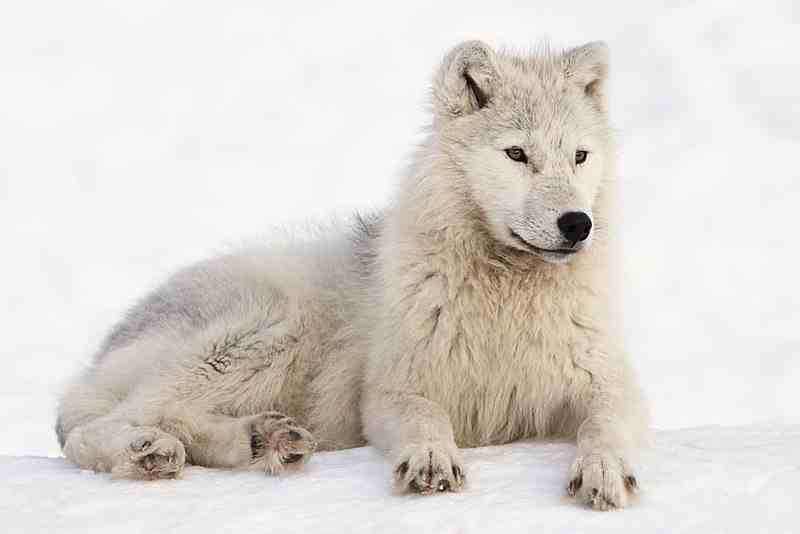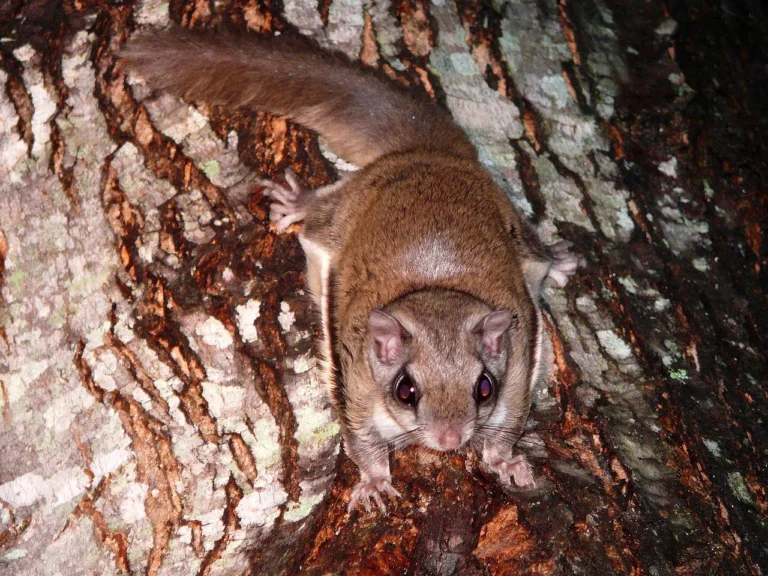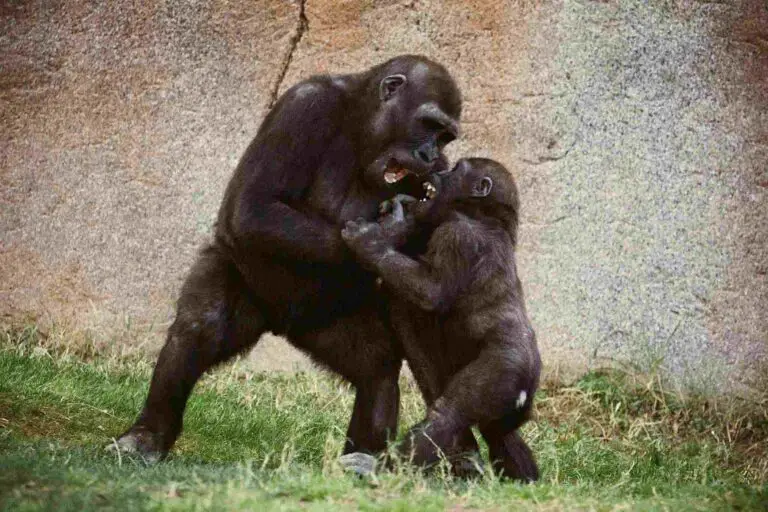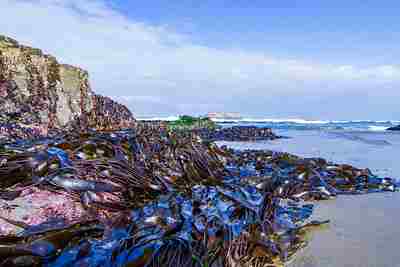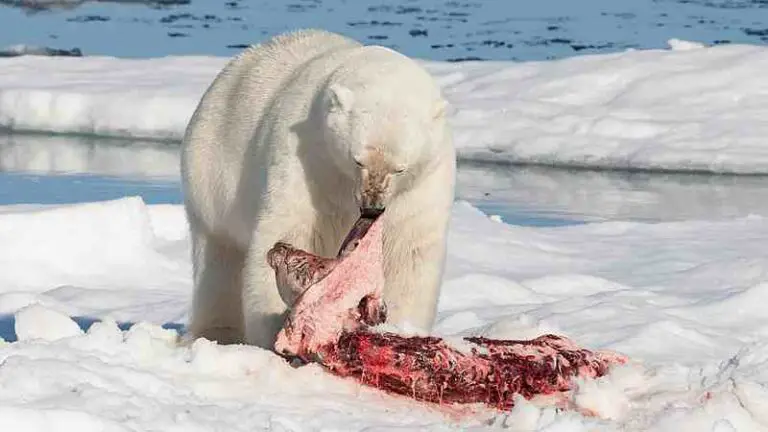Tundra Food Chain with Four (4) Trophic Levels Discussed
Tundra food chain comprises of producers like dwarf birch, primary consumers like lemming, secondary consumers like Arctic fox, and tertiary consumers like polar bear; as well as the trophic relationships that occur among these organisms.
This article discusses the tundra food chain based on its four (4) main trophic levels, as follows;
1). Producers in the Tundra (as part of the Tundra Food Chain)
Producers in the tundra are mostly terrestrial plants, whose role in the ecosystem revolved around the photosynthetic production of biomass from solar energy, water and carbon dioxide.
Compared to more-robust ecosystems like tropical rainforests; the species richness and biodiversity of the producer community in the tundra are low.
This can be attributed to challenges posed by the harsh tundra climate and infertile soil, among other abiotic factors in the environment.
Producers in the tundra are plants that have evolved and adapted to tolerate these harsh conditions. They are important for introducing essential resources like food and bioenergy into the ecosystem, through their solar-capture and photosynthetic activities.
The main producers in the tundra are; sedges, grasses, low-height shrubs, forbs, mosses, and lichens.
*Sedges, Grasses in the Tundra
Sedges and grasses in the tundra are herbaceous, non-woody plants that have adaptations for energy and water conservation.
These adaptations enable them survive the prolonged, frigid winter season and the brief, cool summer.
Sedges and grasses are important for the stabilization of tundra soil, and serve as forage for herbivorous animals [2].
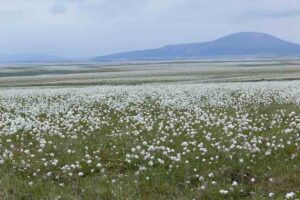
*Low-Height Shrubs
Also called low-growing shrubs, these include various species of shrubs that are ecologically-resilient enough to thrive in tundra ecoregions.
Tundra shrubs tend to grow close to the ground in dense vegetative masses, which is an adaptive physiological feature for survival.
Examples of low-growing shrubs that can be found in the tundra are; heath, dwarf birch, and willow.
*Forbs in the Tundra
Forbs are herbaceous plants that have a relatively-short life cycle, so that they produce flowers rapidly in the short summer season.
Their occurrence compared to other types of plants in the tundra is low.
*Mosses in the Tundra
Both vascular and non-vascular plants may be found in the tundra.
Mosses represent non-vascular tundra plants, which survive due to factors like;
1. Low-height growth
2. Dense vegetative structure
3. Relatively-low water and nutrient demands
4. Relatively-short lifecycle

*Lichens in the Tundra
Lichens are producers that may occur on humid rock surfaces or soil in the tundra.
A lichen is formed by the symbiotic unison of an autotrophic cyanobacterium or alga, and a fungus [3].
Like mosses, lichens survive because of their low-growth, minimal demands, and ecologic resilience.
2). Primary Consumers in the Tundra
Primary consumers in the tundra are herbivorous organisms that survive by directly feeding on autotrophic producers, especially the terrestrial plants.
They are useful to the ecosystem for their role in the sequence of energy-transfer between producers and consumers; serving as a bridge through which energy from producers is obtained by non-herbivorous consumers.
Nutrient-recycling therefore depends on the feeding activities of these primary consumers, in the same manner as it is influenced by producers and secondary/tertiary consumers.
It must be noted that the diversity of primary consumers in the tundra is much lower than it is in forests, aquatic ecosystems and other biomes with more-abundant resources.
Primary consumers in the tundra include herbivorous mollusks, insects, birds, rodents, and large mammals.
*Herbivorous Mollusks in the Tundra
Slugs and snails are two examples of herbivorous mollusks that can be found in tundra regions, especially within transitional areas like forest-tundra ecotones [5].
Here, they restrict their activities mostly to shaded sections of land, and feed on plant matter as well as organic detritus/litter.
*Herbivorous Insects in the Tundra
Insects contribute to the food chain of the tundra, often as primary consumers.
Examples of herbivorous tundra insects are; moths, flies, beetles and butterflies which consume nectar, flowers and leaves among other forms of plant matter.
In turn, these insects can be consumed by other tundra animals like small mammals and birds, to whom they serve as a food source.
*Herbivorous Birds in the Tundra
The grouse and ptarmigan each represent an example of a herbivorous bird that can be found in tundras.
Food for these birds comprises of buds, berries, seeds, flowers and leaves.

*Herbivorous Rodents in the Tundra
Voles, Arctic hares and lemmings are primary consumers in the tundra [1].
These rodents feed primarily on plant materials, a habit for which they have specialized digestive systems and teeth.
They are important as food sources for carnivorous animals within their environment.
*Large Herbivorous Mammals in the Tundra
Some large mammals in the tundra are herbivorous.
They include muskoxen and caribou, which graze on sedges, grasses, and mosses.
General adaptations of herbivorous animals for survival in the tundra include;
1. Thick fur for cold-protection
2. Color camouflage for concealment from predators
3. Hibernating and migratory habits
4. Specialized digestive tracts
5. Drought tolerance
3). Secondary Consumers in the Tundra (as part of the Tundra Food Chain)
Secondary consumers in the tundra are mostly carnivorous animals whose food sources are dominated by animal matter from birds, insects and other mammals.
These consumers are important in their role to the ecosystem, through the regulation of primary consumer-populations, and contribution to nutrient cycling.
The tundra is able to support only a limited number of carnivorous species and individual-organisms, because of it harsh environmental conditions that affect the abundance/availability of prey.
Secondary consumers in the tundra include raptors and small carnivorous mammals.
*Raptors in the Tundra
Raptors in the tundra that can be classified as secondary consumers include rough-legged hawk and snowy owl.
These birds of prey, though formidable as predators, are less dominant than some larger raptors that also traverse the tundra; thereby placing them in a lower trophic level than such consumers.
Adaptations which raptors in the tundra use for their survival include;
1. Thick feathery cover
2. Keen sensitivity
3. Aerial navigation
4. Talons for prey-capture
5. Color camouflage (for the snowy owl in winter)

*Small Carnivorous Mammals in the Tundra
Small (and medium-sized) carnivorous mammals in the tundra are secondary consumers, which occur above the herbivorous primary consumers, and below the larger, carnivorous tertiary consumers.
Food for mammalian secondary consumers comprises of carrion, birds, smaller mammals (like rodents), insects, and bird-eggs.
Examples of small mammalian carnivores in the tundra are; the Arctic fox and the wolverine (which may be described as being medium-sized).
Aquatic micro-habitats like lakes and ponds that occur within tundra regions may also be considered part of the tundra food chain.
In such micro-habitats, secondary consumers include carnivorous fish like the Arctic grayling, that prey on smaller aquatic organisms as part of their diet [4]. Tertiary consumers within this context will then include larger fish like the Arctic salmon shark.
4). Tertiary Consumers in the Tundra
Tertiary consumers in the tundra represent organisms that have the greatest advantage as feeders in the ecosystem, and occupy the highest trophic level of the food chain.
Food for these consumers comprises of both primary and secondary consumers; and their feeding activities help to maintain ecologic equilibrium among the various organic groups in the tundra.
Tertiary consumers assume their exalted position by reason of some physiological and behavioral advantages, such as;
1. Superior size and strength
2. Advanced sensory system
3. Hunting prowess
4. High-altitude habitation/navigation
Examples of tertiary consumers in the tundra are; Arctic wolf (Canis lupus arctos), polar bear (Ursus maritimus), and golden eagle (Aquila chrysaetos)
*Arctic Wolf as a Tertiary Consumer in the Tundra
The Arctic wolf is usually an apex predator within its territory.
It is a large canid that can survive in the Arctic tundra by means of their drought tolerance, endurance, pack-hunting social behavior, as well as thick fur that provides thermal insulation and color camouflage.

Food for the Arctic wolf includes Arctic hare, lemming, caribou, and muskox.
*Polar Bear as a Tertiary Consumer in the Tundra
The polar bear is the largest and most powerful terrestrial predator in the tundra.
Adaptations of the polar bear for survival in tundras include;
1. Drought tolerance
2. Swimming abilities
3. Insulating fur and subcutaneous layer
4. Keen sensitivity (especially to smell)
5. Color camouflage
Food for the polar bear includes other consumers, such as seals and walruses. It is an opportunistic feeder and may consume carrion and non-plant matter when placed under food-supply constraints.
*Golden Eagle as a Tertiary Consumer in the Tundra
The golden eagle is a larger and more powerful raptor than the rough-legged hawk and snowy owl respectively, placing it above these two as a tertiary consumer/apex predator.
Golden eagles are adaptive and survive in the tundra, preying on organisms like smaller birds, small mammals, and occasionally, feeding also on carrion.
Adaptive features of the eagle which it uses to survive in the tundra include;
1. Dense feathery cover
2. Talons
3. Sharp, curved beak
4. High-altitude navigation
5. Keen vision
Conclusion
The tundra food chain is made up of;
1. Producers like Dwarf Birch
2. Primary Consumers like Lemming
3. Secondary Consumers like Arctic Fox
4. Tertiary Consumers Polar Bear
References
1). Aunapuu, M.; Dahlgren, J.; Oksanen, T.; Grellmann, D.; Oksanen, L.; Olofsson, J.; Rammul, U.; Schneider, M.; Johansen, B.; Hygen, H. O. (2008). "Spatial patterns and dynamic responses of arctic food webs corroborate the exploitation ecosystems hypothesis (EEH)". Am Nat. 2008 Feb;171(2):249-62. Available at: https://doi.org/10.1086/524951. (Accessed 13 June 2023).
2). Elliott, T. L.; Henry, G. H. R. (2011). "Effects of Simulated Grazing in Ungrazed Wet Sedge Tundra in the High Arctic Effects of Simulated Grazing in Ungrazed Wet Sedge Tundra in the High Arctic." Arctic Antarctic and Alpine Research 43(2):198-206. Available at: https://doi.org/10.1657/1938-4246-43.2.198. (Accessed 13 June 2023).
3). Morillas, L.; Roales, J.; Cruz, C.; Munzi, S. (2022). "Lichen as Multipartner Symbiotic Relationships." Available at: https://doi.org/10.3390/encyclopedia2030096. (Accessed 13 June 2023).
4). O'Brien, W. J.; Showalter, J. J. (2011). "Effects of Current Velocity and Suspended Debris on the Drift Feeding of Arctic Grayling." Transactions of the American Fisheries Society, Volume 122, 1993 - Issue 4, Pages 609-615. Available at: https://doi.org/10.1577/1548-8659(1993)122<0609:EOCVAS>2.3.CO;2. (Accessed 13 June 2023).
5). Wheeler, J. A.; Hermanutz, L.; Marino, P. M. (2011). "Feathermoss seedbeds facilitate black spruce seedling recruitment in the forest–tundra ecotone (Labrador, Canada)." Oikos 120(8):1263 - 1271. Available at: https://doi.org/10.1111/j.1600-0706.2010.18966.x. (Accessed 13 June 2023).
